Nearly everyone in Dublin knows that James Gandon made his mark on the city with the Four Courts, Custom House and King's Inns. Equally famous architects in more recent times were Michael Scott, who gave us Busáras, and Sam Stephenson, whose often controversial works included the former Central Bank on Dame Street. But not many people have heard of Henry J Lyons (HJL), even though it's now the busiest architectural practice in town – by a country mile.
With a staff of 270, most of them architects, the Pearse Street-based firm has evolved from designing hotels for PV Doyle – the Berkeley Court, Burlington and Westbury – to become the architects of choice for property developers in Dublin. Its chairman, Paul O'Brien, puts this down to their ability to design and deliver buildings of quality, led by seven directors working in a "collegiate fashion" alongside their teams rather than being ensconced in separate offices.
Director Peter McGovern, who joined HJL in 1999, says he “got a sense even then that it could be the best in Ireland”. One of the things that appealed to him was that it didn’t have a “house style” or philosophy about how buildings should be organised and how they should look . “The buildings we do are designed to meet our clients’ requirements and the specific context of any site, so there’s an alignment between what we want to deliver and what our clients need.”
The new Central Bank on North Wall Quay, with its golden aluminium external curtain and remarkable atrium criss-crossed by bridges, is just one of HJL's landmark buildings. So is the circular Criminal Courts of Justice on Parkgate Street, which cleverly conceals its height; it was the largest courts project carried out in Ireland since the Four Courts was completed in 1796. Almost inevitably, HJL are also responsible for renovating the former Central Bank as "Central Plaza".
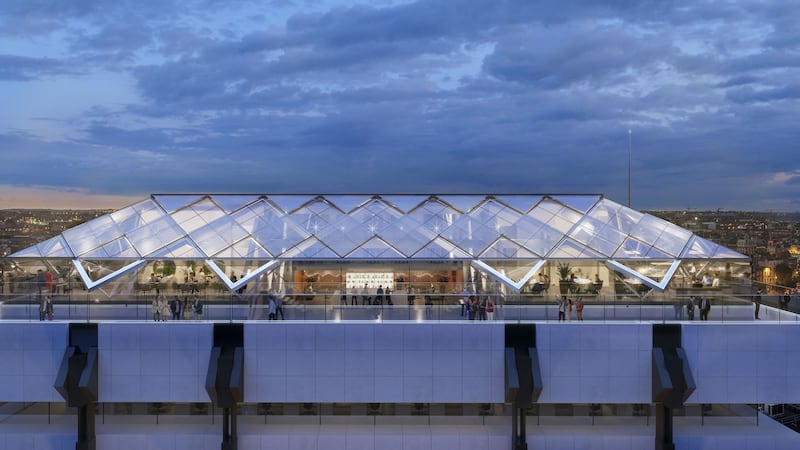
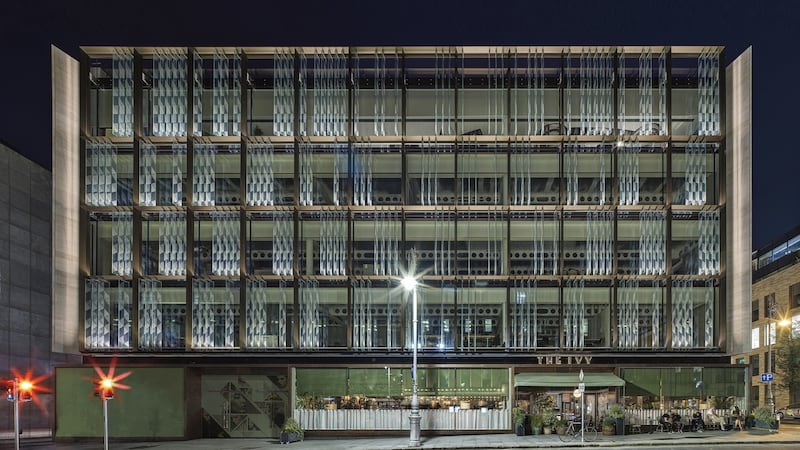
There is scarcely a major street in Dublin 2 that doesn’t already have a new building designed by the firm, or will have one fairly soon. On Dawson Street, for example, HJL were the architects of one of the finest contemporary commercial buildings in the city, on the corner of Molesworth Street, which houses The Ivy restaurant and offices on the upper floors. With fretted glass fins set in a “floating” bronzed metal framework, it has positively transformed this stretch of streetscape.
Around the corner, the building presents a more solid Portland stone facade to Molesworth Street that respects its quite different character. Further along, at the corner of South Frederick Street, HJL also designed the new AIB headquarters, with its travertine entrance lobby, attractive landscaped courtyard and open terraces on the upper levels. It also has fins – this time, in stone – set in a carefully modulated facade, consisting mainly of precision-prefabricated brick panels.
At the junction of Dawson and Nassau streets, all of the Norwich Union’s dated and dreary office blocks have been cleared away for another HJL scheme that will sweep around the tight corner on a curve, making more room for pedestrians, with retail at ground and first-floor levels and offices overhead. The developer is Meyer Bergman, a London-based property investment company that claims to “understand how to curate the urban experience [by] thinking outside the box”.
Further along Nassau Street, the Setanta Centre – designed by the late Brian Hogan in the 1970s – is being demolished to make way for a much lighter office block clad in bronze-anodised aluminium and Portland stone, for a company controlled by beef baron Larry Goodman. The Kilkenny Design shop and its mezzanine cafe is being retained and will be re-clad in stone, while Desmond Kinney's colourful mosaic Táin Wall has been salvaged for re-erection in the courtyard.
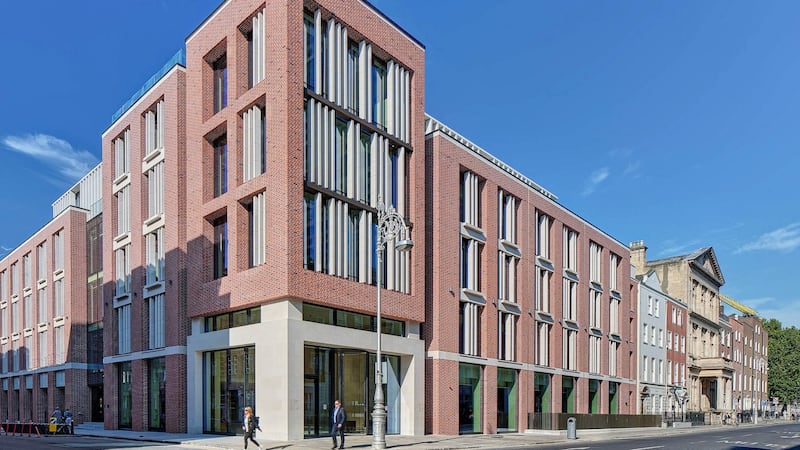
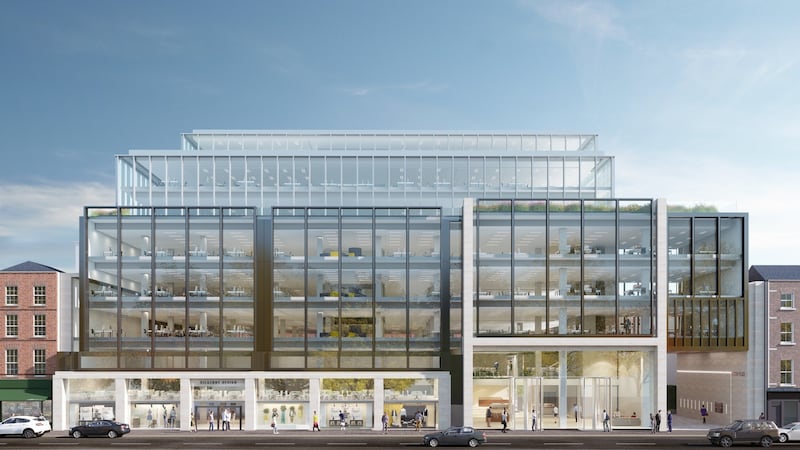
On the west side of St Stephens Green, HJL managed to get planning permission – in the teeth of opposition from An Taisce – for a large multi-angular building sandwiched between the Unitarian Church and a fine pair of Georgian houses, significantly over-sailing their parapet height. The new building, which the architects claim is "highly contextual", will provide additional teaching space, laboratories, student services and other facilities for the Royal College of Surgeons in Ireland.
Around the corner, in York Street, HJL won the Building of the Year award for another Royal College project that took full advantage of a huge hole in the ground (dug out by developer Bernard McNamara for an abortive office scheme) to install a 540-seat tiered lecture theatre and a multi-purpose sports hall in its three-storey basement. The stunning contemporary building, with its signature projecting box, also provides a library, surgical and clinical simulation facilities, tutorial rooms and other services.
On the south side of St Stephen's Green, the former Methodist Centenary Church has been superbly renovated as a new Irish headquarters for American developers Kennedy Wilson, with deep-recessed single-plate glazing in its window openings that make it look more serene. Another conservation project involved the former Bank of Ireland Armoury on Foster Place, extending it to provide more office space for the Irish Stock Exchange, with an atrium between the old and new.
At the southern end of Harcourt Street, the Garda Siochána’s metropolitan headquarters — a dull redbrick horror show from the 1980s — is to be demolished by its owner, Hibernia Reit, as soon as the gardai move out to new offices near the Royal Hospital in Kilmainham. It is due to be replaced by a much larger HJL-designed office complex of 30,000sq m that will address both Harcourt Street and Charlotte Way, rising to nine storeys on the sharply defined corner.
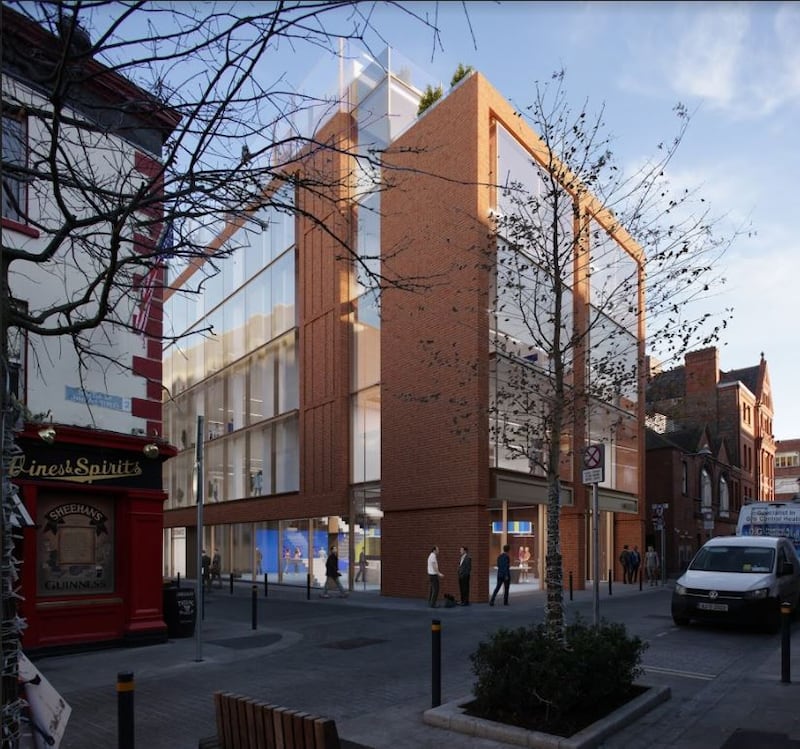
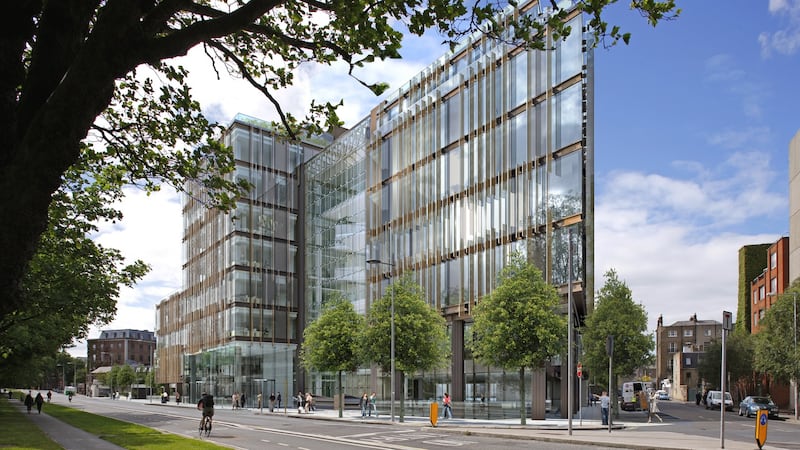
On Chatham Street, HJL are the architects for two major schemes: a large-format retail building, topped by apartments, that replaces a squat three-storey terrace from the 1980s on its south side; and an elegant brick-clad office building on the corner of Harry Street. Extraordinarily, this will contain just a solitary cafe on the ground floor even though Chatham House, the 1960s block that stood on the site, had a good range of restaurants to enliven the surrounding streets.
Wilton Place, on the Grand Canal, will end up with a parade of four new HJL office buildings to replace Fitzwilton House and the former IDA Ireland headquarters, with cafes, restaurants and shops at ground level fronting on the triangular park. Like 10 Molesworth Street, all of this is being planned by IPUT Real Estate, which describes itself as "Ireland's leading commercial property company", with a strong focus on creating high-quality buildings – unlike so many developers in the past.
One of its more extraordinary projects, also designed by HJL, involves the gable-fronted former Tropical Fruit Warehouse, a protected building on Sir John Rogerson’s Quay, which is being “conserved” in its entirety while two floating floors are cantilevered above its roofs from a six-storey office block to the rear. This radical approach is in stark contrast with the treatment of Bob Bushell’s former furniture and lighting showroom further upriver, where only the front wall was retained.
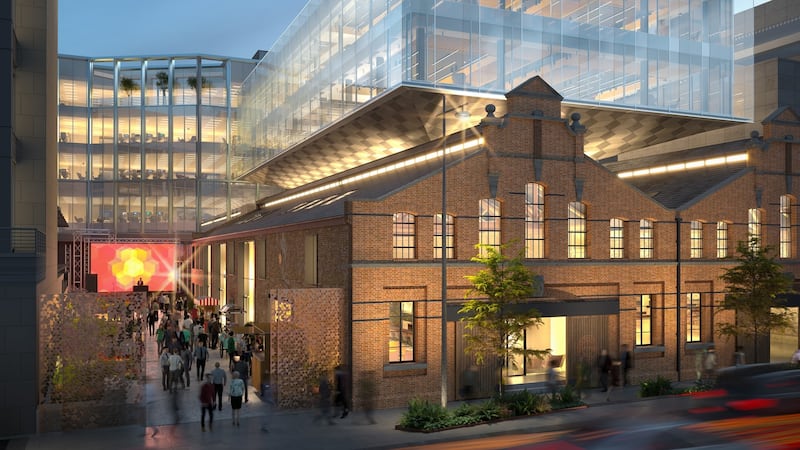
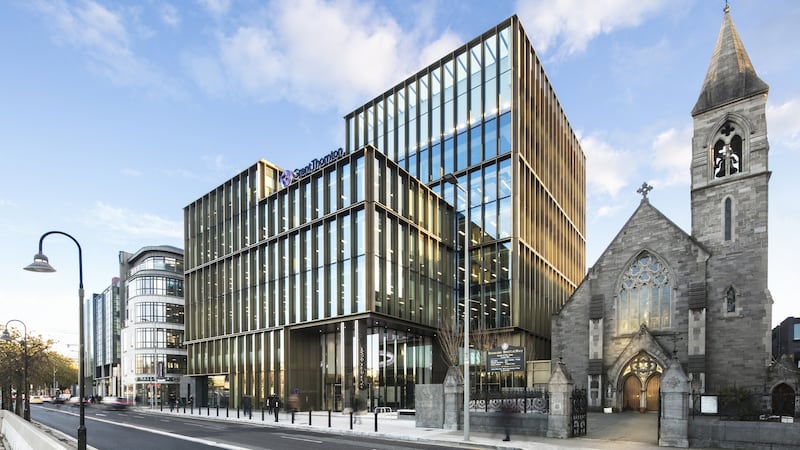
HJL also designed Grant Thornton's new offices, which rises to nine storeys alongside the Catholic church on City Quay. Other developments in Docklands include the Shipping Office on Sir John Rogerson's Quay, distinguished by its red columns and spandrels; the Sorting Office on Misery Hill, which Google was supposed to take until it pulled out of the deal, and luxury "build-to-rent" apartments on Lime Street and Ropemaker Place on Havover Street East, for the Marlet group.
HJL is also working with Marlet on the redevelopment of an entire city block previously occupied by Apollo House, College House and the Screen Cinema – all of which have already been demolished – and Dublin's most unloved 1960s relic, Hawkins House, which will soon follow them. They are to be replaced by a dense office complex rising to 12 storeys, with shops and cafes at street level and a new pedestrian route through the site linking with Tara Street Dart station.
Controversially, planning permission was granted by An Bord Pleanála for an amended version of version of the scheme to add 10 floors of "build-to-rent" apartments on top of an 11-storey office block on the Apollo House site, even though no provision was made for it in Dublin City Council's local area plan. This would be nearly as tall as an equally contentious 88-metre tower planned on the east side of Tara Street by Johnny Ronan's real estate group, with HJL as its architects.
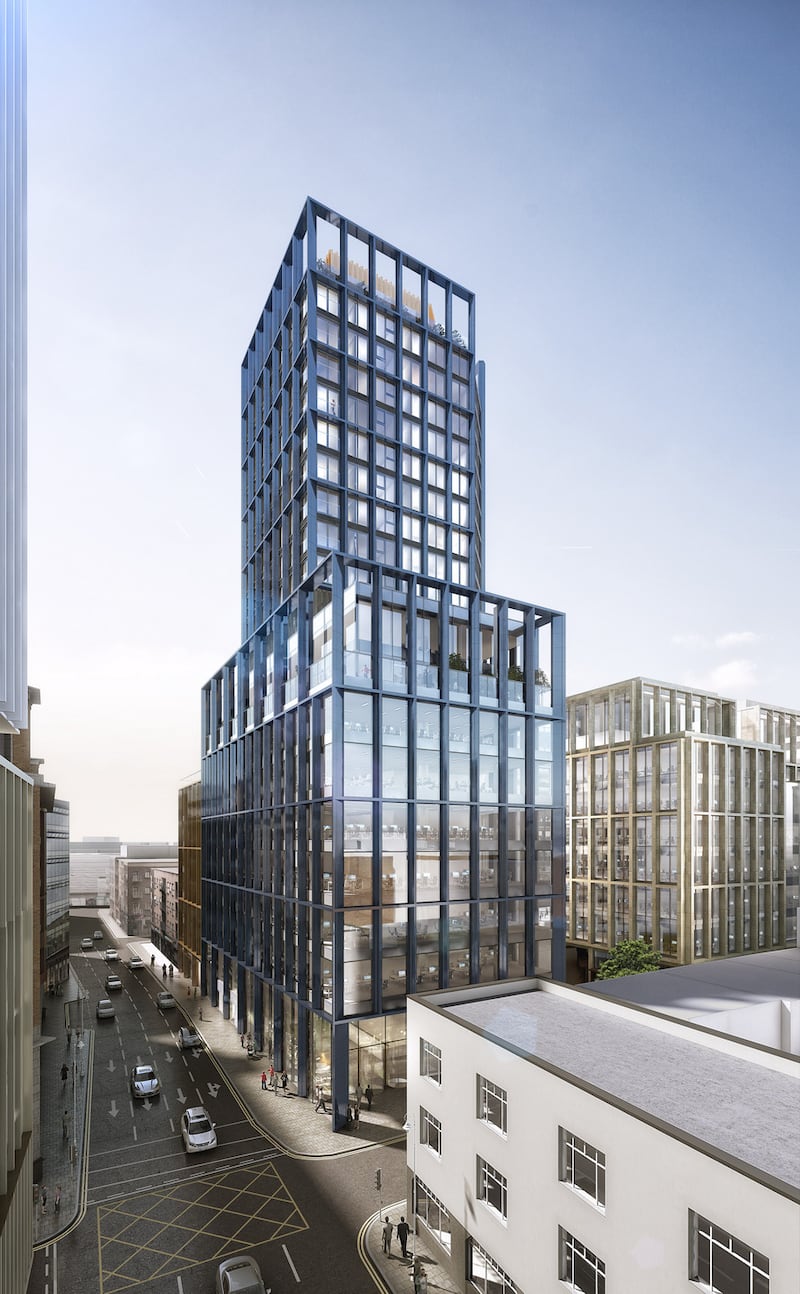
The tower’s five-storey podium was intended to be a hotel. But the Covid-induced crash in international tourism forced a rethink, so planning permission is now being sought for office use instead. As for the future of offices, with so many people now working from home, Paul O’Brien believes they’ll come back to a less congested environment, with more space between work stations, to collaborate with colleagues directly rather than interacting remotely via Zoom conference calls.
Office developers must be betting on a return to some sort of normality. Otherwise why would McGarrell Reilly be building a huge office scheme for Amazon on Charlemont Street? This, too, has been done by HJL, as has another major development on the former College of Technology site in Kevin Street (which also includes 299 "build-to-rent" apartments) – although it will have to be redesigned after Dublin City Council expressed concern about its overall scale and visual impact.
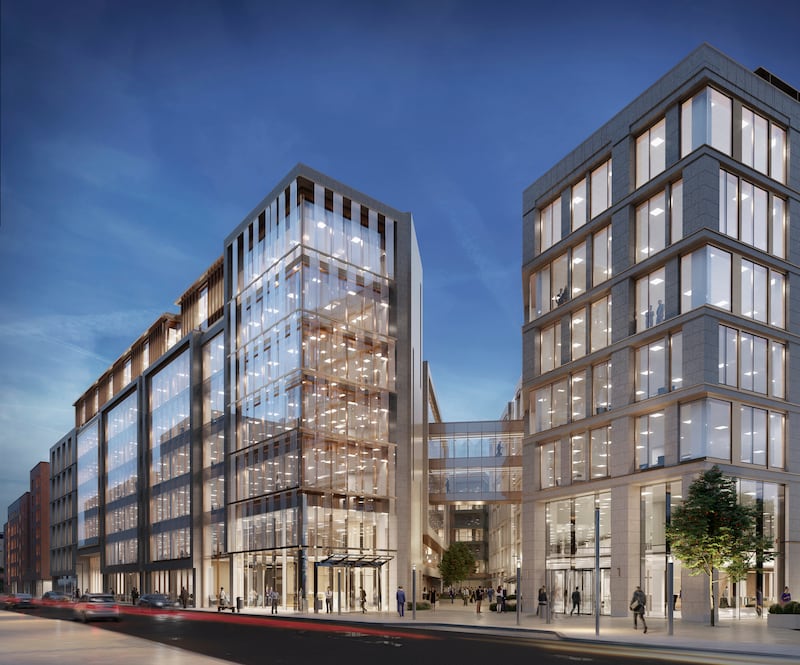
Two more office blocks are being planned by HJL to replace some of the truly awful 1970s and ’80s brick-clad buildings on the north side of Lower Mount Street, with up-and-down aluminium windows mocking the Georgian idiom. And outside of Dublin 2, the same architects were involved in designing the huge housing scheme planned by American developers Hines for the former Bailey Gibson and Player Wills sites on South Circular Road, which includes a 16-storey apartment tower.
As for the loss of embodied carbon from demolishing existing buildings to make way for new ones, Paul O’Brien points out that all of the concrete ends up being crushed for use as hardcore in foundations, while the glass – even including light fittings – and steel are also recycled. “Older office buildings would have very low levels of energy efficiency compared to what we’re replacing them with, which is generally moving towards ‘net zero’ in terms of their carbon footprint,” he says.
Asked about the impact of tall buildings on Dublin’s skyline, such as HJL’s proposed residential skyscrapers for Johnny Ronan’s “Project Waterfront” on North Wall Quay, O’Brien believes that they would “significantly enhance the impressions visitors have of the city and the standing of Dublin internationally”, by showing that it was “moving with the times”. He rejects any suggestion that we are aping Manchester’s random eruption of high-rise buildings in recent years.
Meanwhile, HJL can celebrate winning an architectural competition for Ireland House in Tokyo, a €21 million project that "will bring diplomats and State agency personnel together under one roof", seeing off such luminaries as Grafton Architects.
It helped that Peter McGovern, the HJL director leading this project, had worked in Tokyo during his student years for leading Japanese architect Tadao Ando, who was awarded the prestigious Pritzker Prize for lifetime achievement in 1995.


















